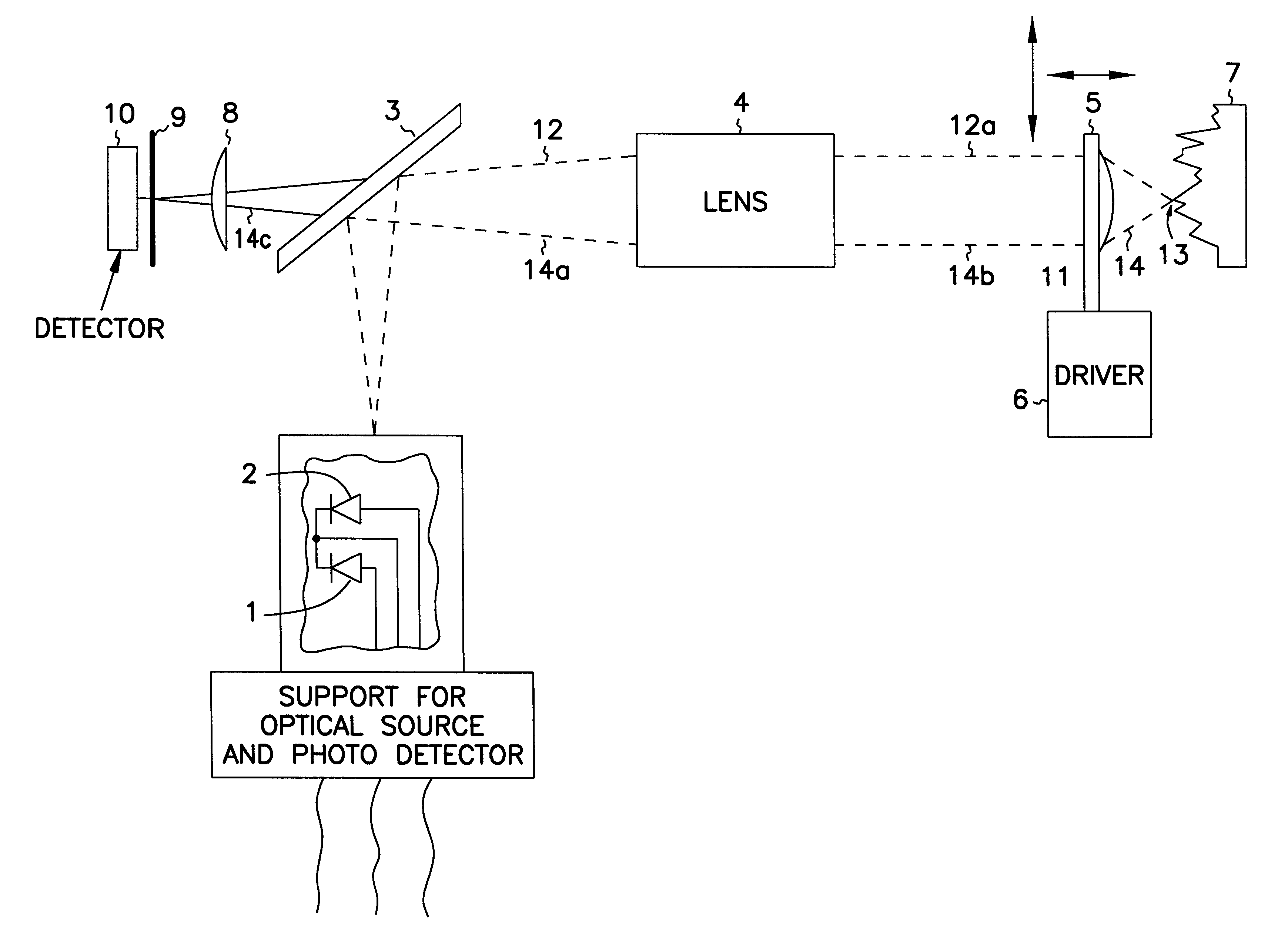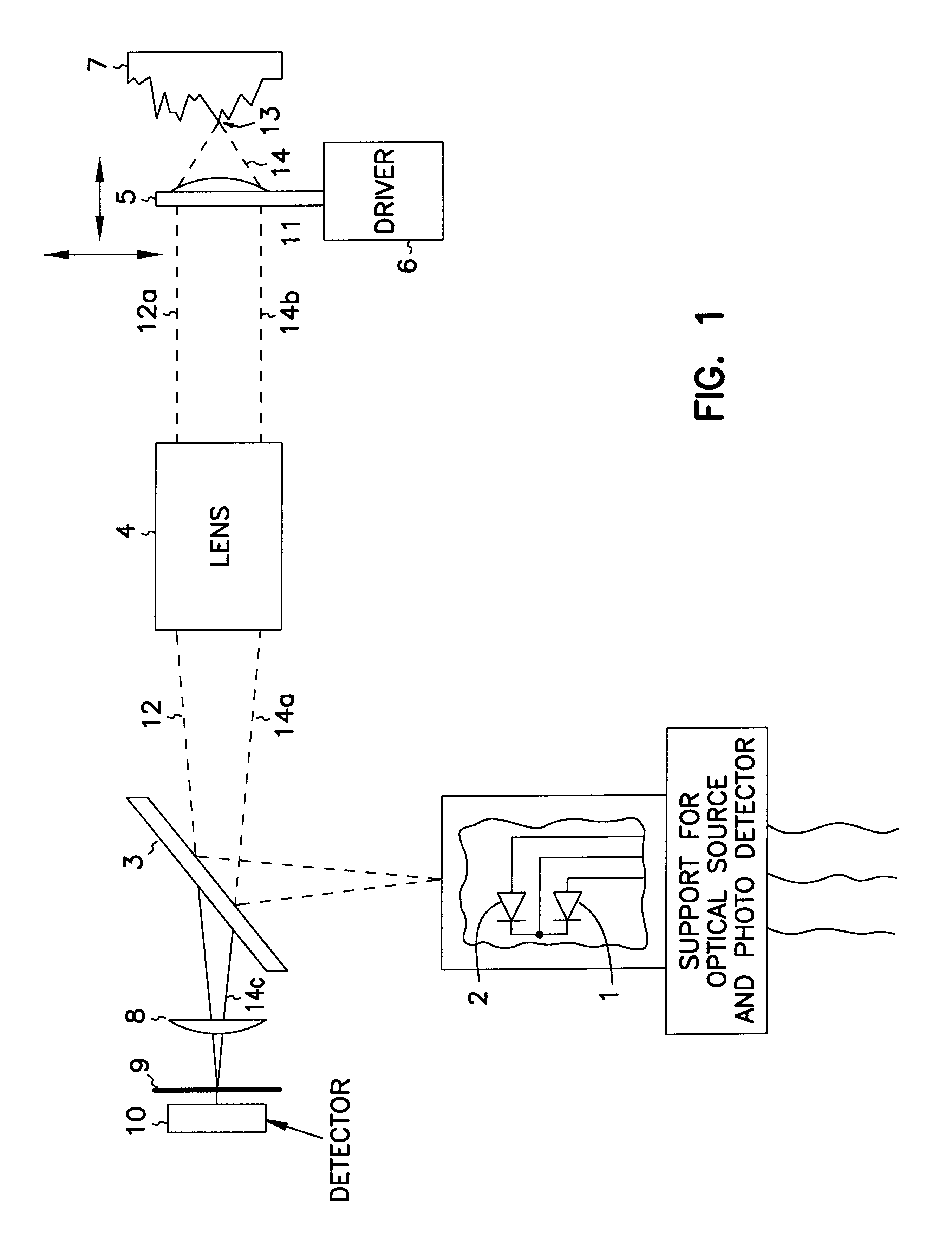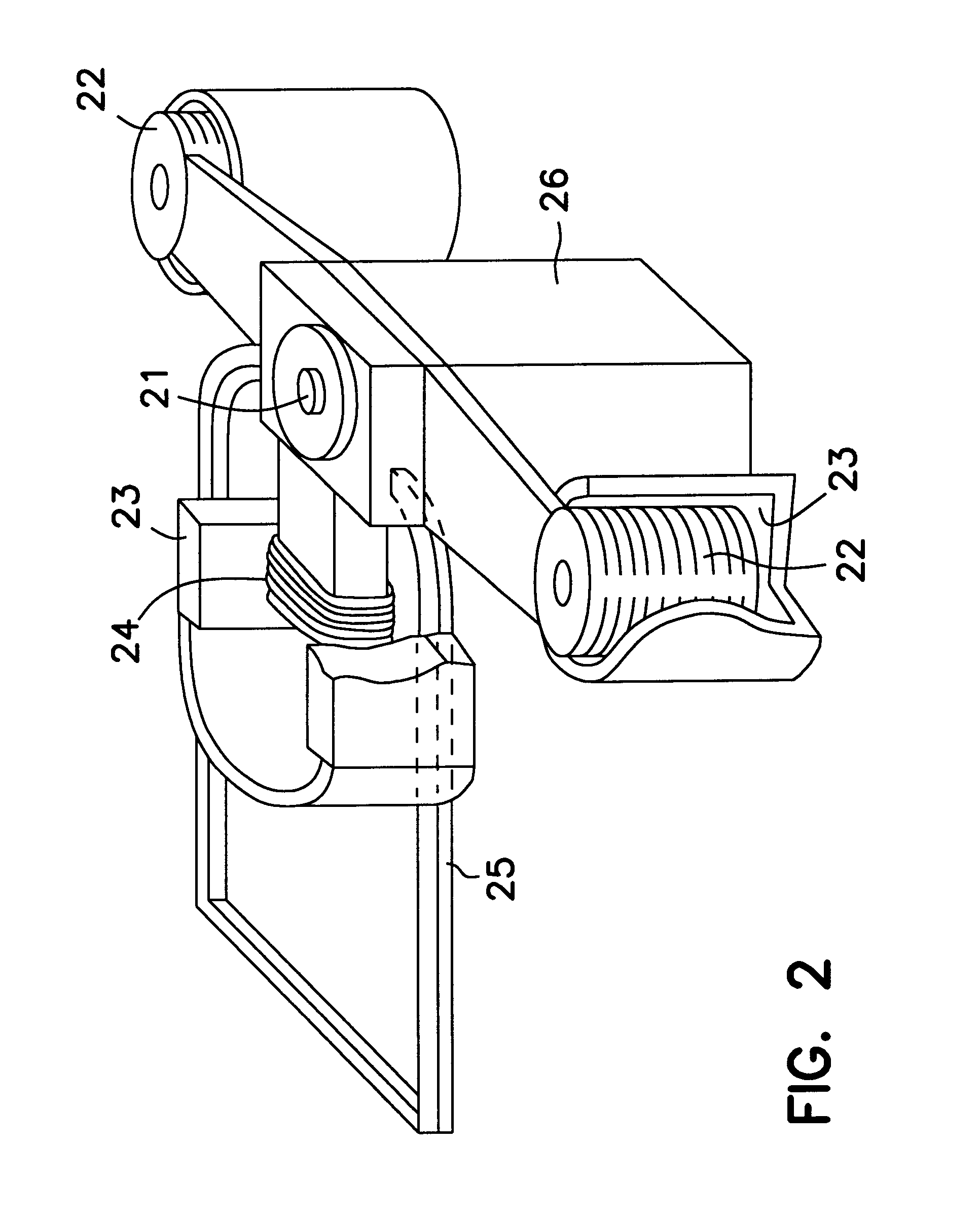Scanning confocal microscope with objective lens position tracking
a confocal microscope and objective lens technology, applied in the field of confocal microscopes, can solve the problems of not being stable in its realistic accuracy, affecting the operation of the microscope, and being relatively expensive and significant in its utility, and achieving the effect of improving the accuracy of the microscop
- Summary
- Abstract
- Description
- Claims
- Application Information
AI Technical Summary
Problems solved by technology
Method used
Image
Examples
Embodiment Construction
This example was used to determine the usefulness and accuracy of having a reference signal generated by a relatively thin, (compared to the focus scan amplitude) transparent object, i.e. cover glass window, transparent polymer film, and the like, placed between the sample being scanned and the moving objective. An in-focus signal that corresponds to a reference signal will be generated when the focal point of the laser beam is on either surface of the reference object. Hence, up to two reference signals will be detected before the data signals and then up to two reference signals will be detected after the data signals.
A Sony model KSS-240a CD player optical head (having a quadrilateral detection unit) obtained from a Sony model CDP-311 compact disk player was modified such that motions of the objective lens in the axis of the laser beam, i.e. the focus axis, were driven by a 2 Hz triangle waveform. The amplitude of the waveform caused the objectives amplitude of motion to be 2 mil...
PUM
 Login to View More
Login to View More Abstract
Description
Claims
Application Information
 Login to View More
Login to View More - R&D
- Intellectual Property
- Life Sciences
- Materials
- Tech Scout
- Unparalleled Data Quality
- Higher Quality Content
- 60% Fewer Hallucinations
Browse by: Latest US Patents, China's latest patents, Technical Efficacy Thesaurus, Application Domain, Technology Topic, Popular Technical Reports.
© 2025 PatSnap. All rights reserved.Legal|Privacy policy|Modern Slavery Act Transparency Statement|Sitemap|About US| Contact US: help@patsnap.com



